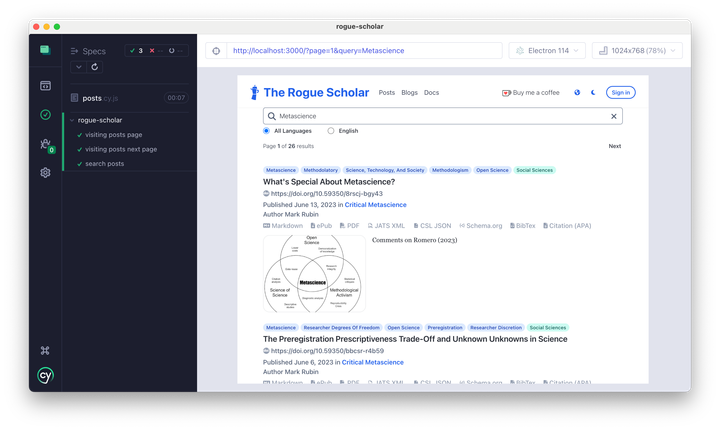New in PLoS ONE: Citation rates of self-selected vs. mandated Open Access
PLoS ONE today published a paper very relevant to Open Access Week (which started today):
Gargouri Y, Hajjem C, Larivière V, Gingras Y, Carr L, Brody T, Harnad S. Self-Selected or Mandated, Open Access Increases Citation Impact for Higher Quality Research. PLoS ONE. 2010;5(10):e13636+. doi:10.1371/journal.pone.0013636.
The paper studied the citation rates of papers from four institutions with the longest-standing self-archiving mandate: Southampton University, CERN, Queensland University of Technology and Minho University. The mandates (instituted between 2002 and 2004) increased the rate of self-archiving in the respective institutional repositories from around 15% to 60%:

The authors then compared the citation rates of self-archived papers from the four institutions published in non-Open Access (OA) journals (mandated OA) to matched papers from the same non-OA journal, volume and year (non-OA). 15% of the latter papers were also available from repositories (self-selected OA). Overall the study examined the citations of 27,197 papers from 1,984 non-OA journals. The study also looked at the influence of other factors that affect citation rates, e.g. article age, journal impact factor or number of references.
The main results of the study are that OA articles are cited more frequently than non-OA articles and that there is no difference in citation rates between mandated and self-archived articles. The authors conclude that OA articles are cited more often not because of self-selection (articles with higher impact more likely become OA), but because of readers cite OA articles more often.
The study is an effort to better understand if and why OA papers are cited more often, the so-called OA Advantage. Unfortunately I feel that the paper comes a little short. Yes, they did a very detailed analysis of the citation behavior, and take into account important cofactors. But the reader is left with the impression that mandatory self-archiving of post-prints in institutional repositories is the only reasonable Open Access strategy, and the introduction and discussion accordingly leave out some important arguments.
The authors fail to mention that not all studies show a citation advantage for OA articles (e.g. the randomized controlled trial by Davis PM et al. 2008), and they only look at self-archiving in institutional repositories (green OA). Not only are there important disclipline-specific repositories such as PubMed Central and ArXiv, but of course also OA journals such as PLoS ONE that published the study (gold OA). And the study only discussed archiving of articles after peer review, even though archiving of preprints is a popular strategy in high-energy physics and related disciplines (and here the self-archiving rate is close to 100%). I also don’t see a discussion of why the self-archiving rate of post-prints in institutions with a mandate is 60% and not close to 100%. And what is wrong if archiving rates are only around 15% if it is left to the researchers to decide? Finally, there are many reasons other than citation rates that make OA worthwhile, including access to the literature for those not working in academic institutions (and maybe never citing a paper), and work that uses the OA literature in new and exciting ways that go beyond citations. For me personally, the OA advantage is much more in these two aspects than in the citation rates of papers.
For me Open Access week is an opportunity to celebrate what has been achieved over the years. But it is equally important to look at the road ahead. There is no “one size fits all” solution for Open Access, and we shouldn’t look away from the things that aren’t working, and the solutions that haven’t been found yet.
References
Gargouri Y, Hajjem C, Larivière V, et al. Self-Selected or Mandated, Open Access Increases Citation Impact for Higher Quality Research. Futrelle RP, ed. PLoS ONE. 2010;5(10):e13636. doi:10.1371/journal.pone.0013636




Comments ()